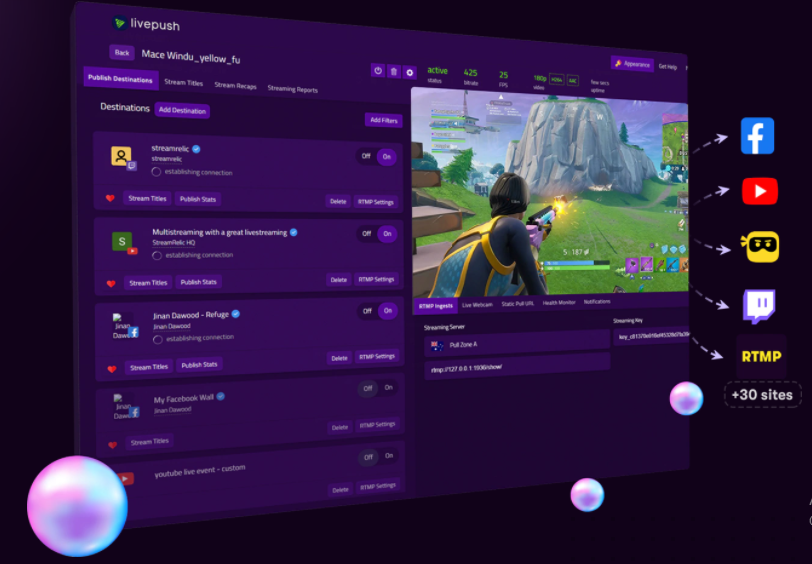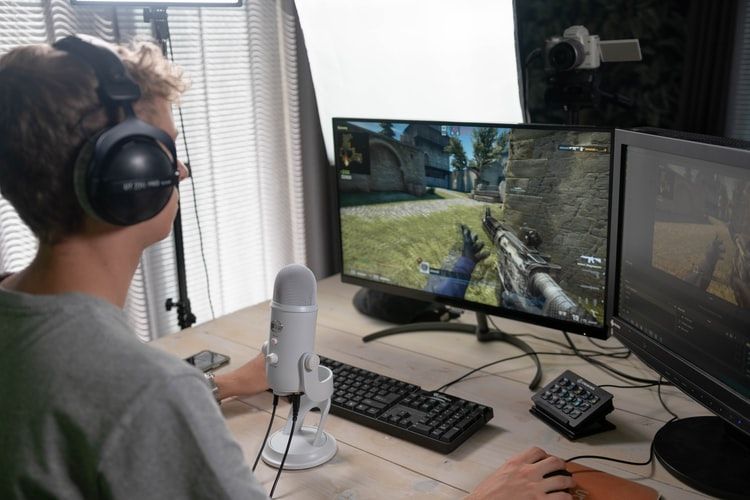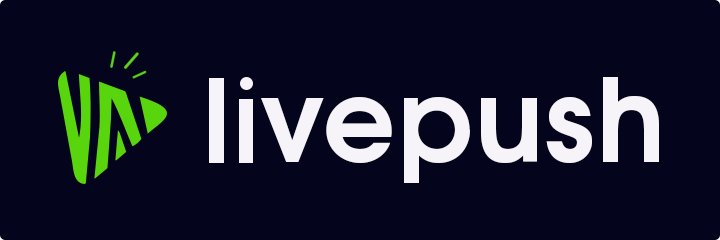
All the Things you Need to Launch a Successful Live Stream
Brands use live streaming for multiple purposes, but 74 percent of corporations have used this live streaming for their customer base
If you don't know how to run a live social media stream case, don't be scared. You can't just press the "Live" button on Facebook and pose like the headlights on the camera. Instead, a detailed checklist has been created that lets you prepare the first – or next – live stream.
How Multi-Live Streaming Works?
Live broadcasting is a means of communicating the activities to an anonymous crowd. It's a multimedia alternative to selling tickets for an actual event that lets you reach out with live videos to people close and far. Brands use live streaming for multiple purposes, but 74 percent of corporations have used this live streaming for their customer base, according to a Brandlive report. Therefore, you encourage audiences to make a face (or faces) of your organization's name in real time instead of being "the proverbial man behind the curtain."
A variety of different types of events can also be used for live streaming. Everything from the White House to designer houses to chefs has live footage of corporate events, runway demonstrations and culinary demonstrations alike. We used it here at HubSpot for such items as conversations with thinkers. But feel free to be adventurous - just make sure that you are protected by the foundations.
A Successful Live Streaming: Step by Step Guide

Take these guidelines until you are about to continue learning how to live successfully:
1. Template your live stream like some other experience you'd like:
Find some of the most famous speech displays. Could you imagine if something like 'The tonight show' wasn't scheduled for guests, casts, lighting and times? It might be chaotic, to say the least. You would like to position your live stream with the same consideration and due care as you bring in a personal event of this kind. And before you are planning those preparations, you would want to keep your priorities in mind, which are going to determine certain logistics.
2. Pick your platform:
Here you just need to understand your ambitions so different platforms will do numerous things.
Online YouTube:
If you're trying to raise sales — which is one of the best channels for 75 percent of marketing practitioners who use content — YouTube Live. This is how it works. If you don't already have one, you will need a Google account that you will use to build one on YouTube. You will have to use this account.
If you're done, you can go to a potential stream using YouTube's Live Streaming Events dashboard—click on "Enables Live Streaming" if you haven't set it up already. YouTube requests a buffer of 24 hours from the time you allow live and your first live streaming. Just log in to your YouTube Studio until the time lasts 24 hours. Then, in the upper right corner, press the "Create" button.
If you cannot integrate, you can only link it - the embedding code only produces an unobtrusive design that you can place up on your thank you-you-page. In any case, please use the Thank You page as a reminder of the date and time of the event by your attenders.
It is also possible to open the YouTube Live Event to the public entirely. Conley says, this is a reasonable choice for an important event where you "want to find everybody." But she points out that if you post the stream, make sure you use the event to advertise the gated material that your audience needs to use.
3. Pick your device:
Some of it is quite intuitive when it comes to the actual hardware needed for your live stream: for example a camera or a computer with one installed is very normal (like a laptop or phone).
Remember how competent you want to be, too. Your camera may possess an individual microphone, but body mics may well not be a bad thing if your environment is more vulnerable to noise. And you'll also need some kind of encoding program if you are using an external caméra, says Hunersen (Facebook has a great step-by-step guide to that). This transforms a camera film to a medium which can be interpreted and transmitted by the viewing network for viewers.

Your app can be depending on your budget, but check the one from Adobe in order to get started. Think, as one with your logo, about creating a professional backdrop. This will help to brand your videos and give them a certain visual quality, which is an especially good practice if you intend on broadcasting live a lot in future. Would you want to take it further? "Build your office in a fortuitous studio to speed up the preparation time for any future recordings," says Conley. "To capture someone's attention quickly by scrolling through their news feed, your facebook live could have a beautiful, branded backdrop."
4. Make the race dry:
There is an explanation why we dress up. When I was in a high-school show-choir —a painful and true anecdote — I wasn't going on high heel tap shoes around my dance partner. However, we do dry runs for live streaming to prevent more technical, but also humiliating, errors. Improving may be hiloking, but that doesn't mean that your equipment doesn't have a contingency plan or that you're verbally unprepared.
5. Prepare any speakers as visitors:
Is anything more than an uncomfortable, quiet moment? Make sure to train the guests for any questions that may be asked during your practice run. Don't repeat, but do whatever you can to keep them from being taken off balance. "It may be helpful to give a potential guest a few questions in advance," says Hunersen, "but save some follow-up questions or in-depth on-air questions so that both are ready and can respond at this time."
6. Check your link to audio and internet:
It may be that you want people to chat about your live stream, but not that they say, "We can't hear you." Verify that the whole audio setup functions on your dry run as well as the day of the stream. It certainly won't harm to have an additional microphone and batteries at hand. Enforce the treatment of a live stream by your network. As high quality content is being streamed.
Conclusion:
After your live stream has finished, it is always fun to follow for your members. Thank you for your time, give your next event a headline and invite it to download a related piece of material. You probably have done great work in pursuing these steps to produce instructions using your live stream, so keep up and cultivate them.
